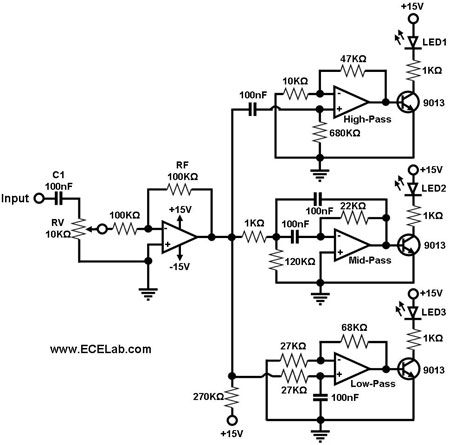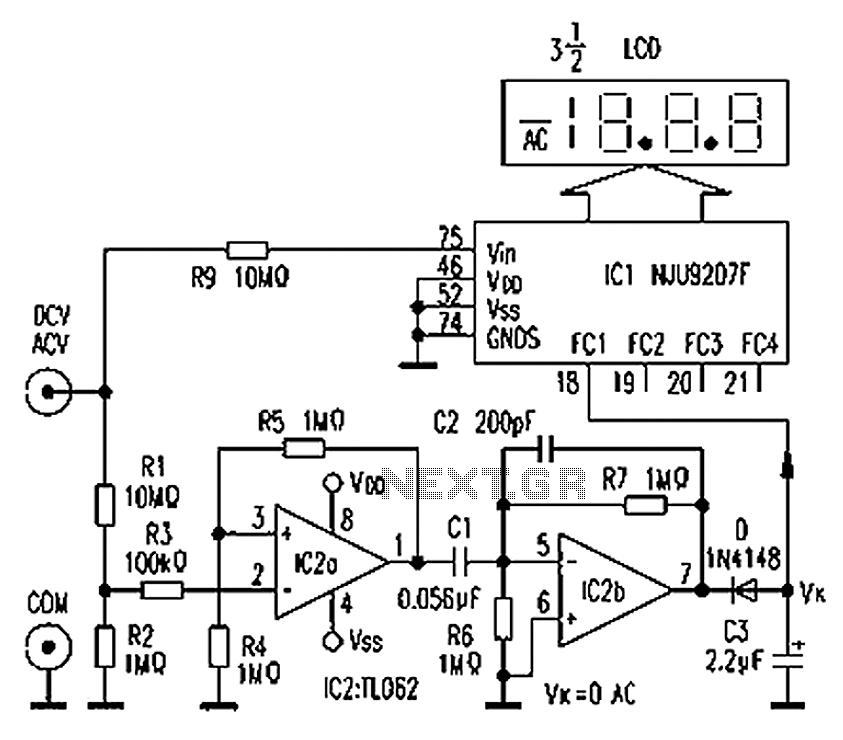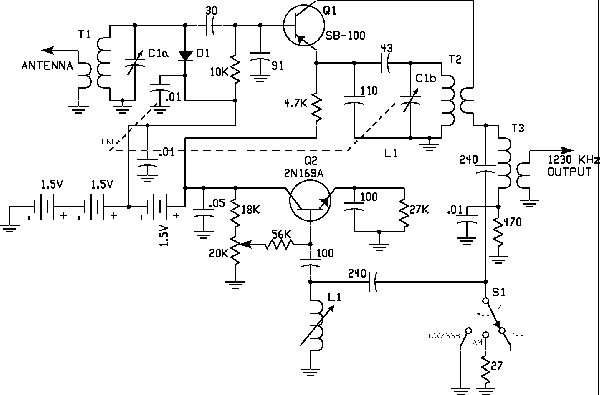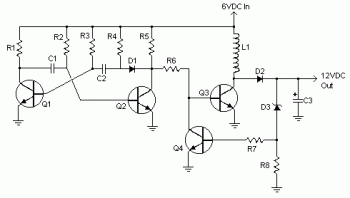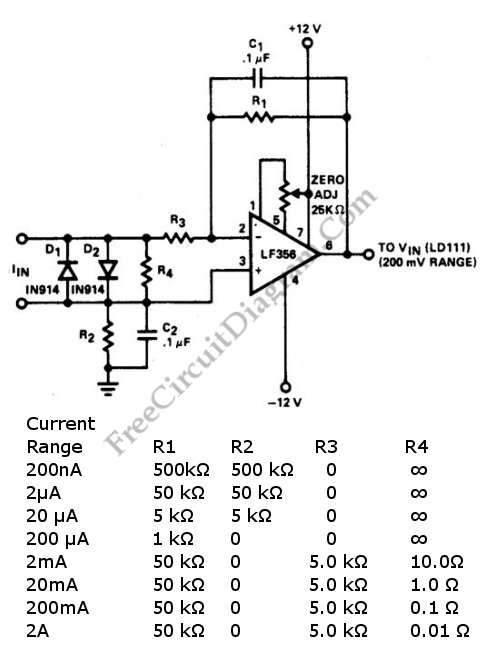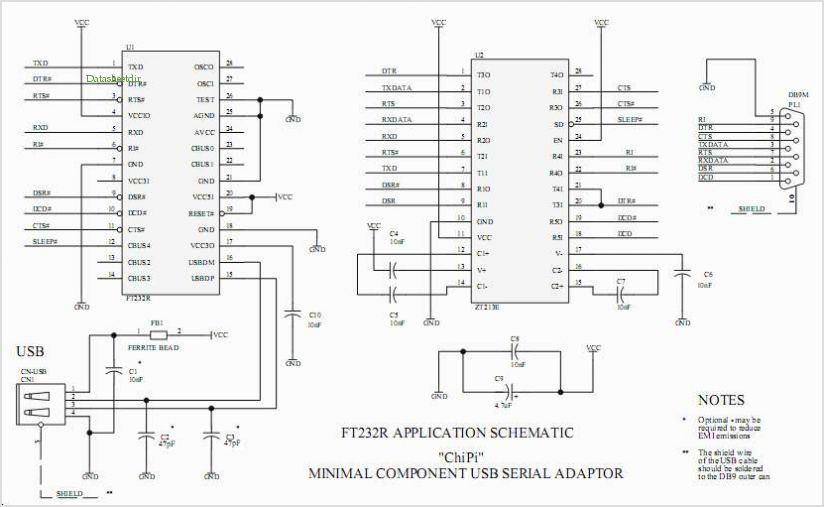
Voltage-to-frequency converter
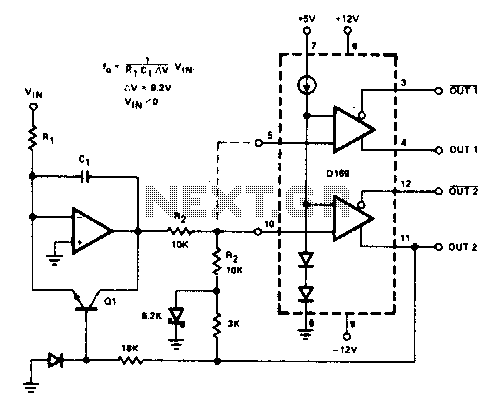
The D169 functions as a level detector, offering complementary outputs. An operational amplifier (op amp) is employed to integrate the input signal Vin, utilizing a time constant defined by the resistor R1 and capacitor C1. A negative input signal generates a positive ramp at the output of the integrator, which is combined with a negative zener voltage. When the ramp reaches a sufficient positive level, the D169 outputs transition states, resulting in OUT 2 changing from a negative to a positive output. The output pulse repetition rate is directly proportional to the negative input voltage Vin.
The D169 circuit is designed to detect specific voltage levels and produce corresponding output signals. The operational amplifier serves a crucial role in the integration process, where the time constant, determined by R1 and C1, dictates the response time of the circuit. The integration of the negative input signal (Vin) results in a gradual increase in the output voltage, forming a ramp. This ramp voltage is then compared against a reference voltage provided by a zener diode, which stabilizes the threshold at which the output state changes.
As the ramp voltage rises, it eventually crosses the threshold set by the negative zener voltage. At this point, the op amp output switches states, leading to a transition in OUT 2 from negative to positive. This transition is indicative of the input voltage reaching a critical level, allowing the circuit to serve as a precise level detector.
The relationship between the input voltage (Vin) and the output pulse repetition rate is linear, meaning that as the magnitude of the negative input voltage increases, the frequency of the output pulses also increases. This characteristic allows the D169 to be utilized in applications where monitoring of voltage levels is essential, such as in signal processing or control systems. The complementary outputs provide versatility, enabling the circuit to interface with various downstream components or systems, depending on the requirements of the application.The D169 serves as a level detector and provides complementary outputs. The op amp is used to integrate the input signal Vin with a time constant of R1C1. The input (must be negative) causes a positive ramp at the output of the integrator which is summed with a negative zener voltage. When the ramp is positive enough D169 outputs change state and OUT 2 flips from negative to positive The output pulse repetition rate £>, is directly proportioned to the negative input voltage Vin. 🔗 External reference
The D169 circuit is designed to detect specific voltage levels and produce corresponding output signals. The operational amplifier serves a crucial role in the integration process, where the time constant, determined by R1 and C1, dictates the response time of the circuit. The integration of the negative input signal (Vin) results in a gradual increase in the output voltage, forming a ramp. This ramp voltage is then compared against a reference voltage provided by a zener diode, which stabilizes the threshold at which the output state changes.
As the ramp voltage rises, it eventually crosses the threshold set by the negative zener voltage. At this point, the op amp output switches states, leading to a transition in OUT 2 from negative to positive. This transition is indicative of the input voltage reaching a critical level, allowing the circuit to serve as a precise level detector.
The relationship between the input voltage (Vin) and the output pulse repetition rate is linear, meaning that as the magnitude of the negative input voltage increases, the frequency of the output pulses also increases. This characteristic allows the D169 to be utilized in applications where monitoring of voltage levels is essential, such as in signal processing or control systems. The complementary outputs provide versatility, enabling the circuit to interface with various downstream components or systems, depending on the requirements of the application.The D169 serves as a level detector and provides complementary outputs. The op amp is used to integrate the input signal Vin with a time constant of R1C1. The input (must be negative) causes a positive ramp at the output of the integrator which is summed with a negative zener voltage. When the ramp is positive enough D169 outputs change state and OUT 2 flips from negative to positive The output pulse repetition rate £>, is directly proportioned to the negative input voltage Vin. 🔗 External reference
